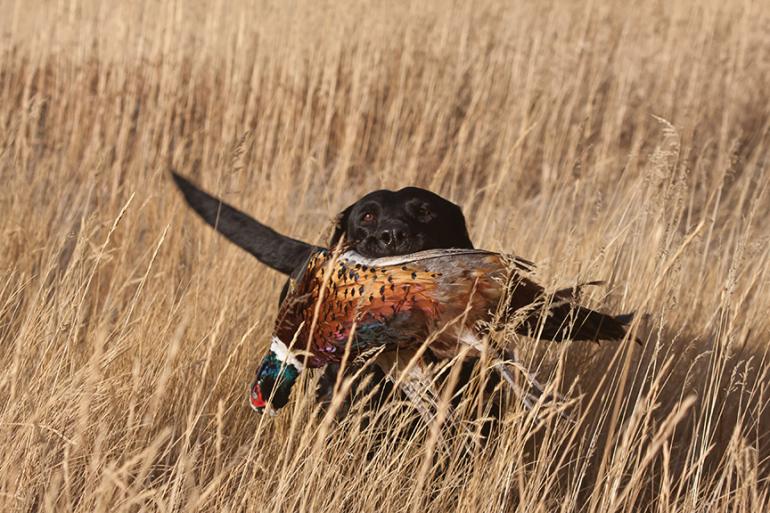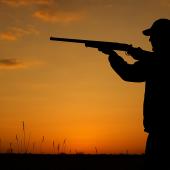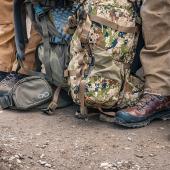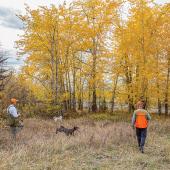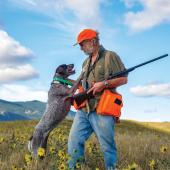Year of the Rooster
Chinese ring-necked pheasants are the Cadillacs of Montana’s game birds, and hunting them can be an extraordinary experience. Yes, jumbo-jet-sized Canada geese are spectacular, and some people would trade all other bird hunting to continue to walk the high grasslands for sharp-tailed grouse; others burn incense at the icon of wing shooting, ruffed and blue-mountain grouse twisting away through the pines.
But hunting the flashy pheasants is something else all together. That cocksure croak echoing through the trees, those formidable spurs, the explosive launch out of the cattails… indeed, a ringneck is the phoenix of the field, paragon of our upland domain, and one cannot help but revel in its pursuit. Throw in an enthusiastic bird dog—the bond and teamwork between two natural-born hunters is a thing of beauty—and you have the makings for an experience unrivaled in the outdoor world.
Habitat
Pheasants largely occupy coulees and creek bottoms, taking refuge in cattails and in snowberry and wild-rose brier patches. They slip out of these secure places to fill their craws with grain left in the wheat and barley stubble fields that so often transect their habitat. There the light improves in pheasant season, which, in Montana, is early October through December. The acute angle of the autumn sun’s departure and approach from the horizon prolongs the saturated colors at the shoulders of the day. Sometimes when it slips out from under a cloud bank just at the horizon, the light pours in dense as butterscotch. And the violet snow of the late-season stubble fields, when the birds are heavy-feathered, may convince you that Charlie Russell’s palette wasn’t all romance and exaggeration.

Behavior
There is nothing like a spring-loaded rooster giving up his hiding gig to bust up out of the brush. The sneaky, snaking, keen-eyed, fast-running, big, gaudy cock-birds often wait to flush until a hunter is right on top of them, hoping on hope that the hunter will pass and the dog has a bad nose. When flushed, the action is loud and sudden. It seems entirely unlikely that hunters could recover their senses quickly enough to shoot well, but they do. Pheasants typically scurry along the ground, but once flushed and airborne, they can fly up to 60 mph. Again, it’s a wonder anyone can hit them at all.
Gear
To hunt pheasants, you’ll need a good shotgun. In Montana, you can take pheasants with any caliber up to a ten gauge, but it’s best to stick with a 12 or 20. Being that the season covers most of the fall, you’ll want to prepare for everything from temps in the 70s to a foot of snow. Layers are key, and so is a good map. Download a land-ownership app, such as OnXmaps, to your phone, but also carry a physical one in your coat. As always, hunters are encouraged to wear blaze orange, and it’s a good idea to have some on Rover as well. Speaking of Rover, a trusty bird dog, like a lab, is almost as important as a good gun.
Regs
Pheasant season starts later than general upland season, so be sure you’re shooting at the right bird. Also keep in mind, regardless of the date, that a hen pheasant, which is illegal to take, looks a lot like a grouse. Unlike most game species in Montana, pheasants occupy private land almost exclusively, at least here in Region 3. Landowner permission is therefore required for most hunts, although there are several unique opportunities, such as the odd Block Management, Pheasants Forever, or state-land piece. Still, expect some extra planning.
For more information about hunting pheasants in the Gallatin Valley, visit gallatinvalleypf.org. This article originally appeared in Stalk hunting guide, an annual guide to hunting in southwest Montana.

